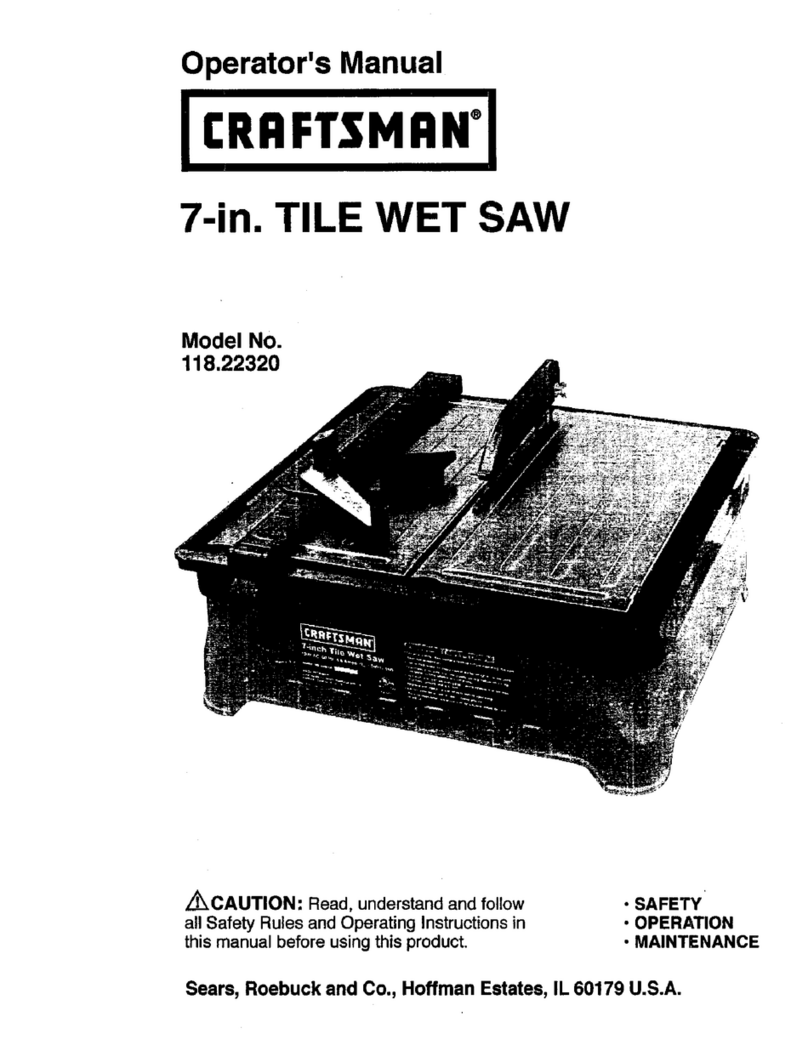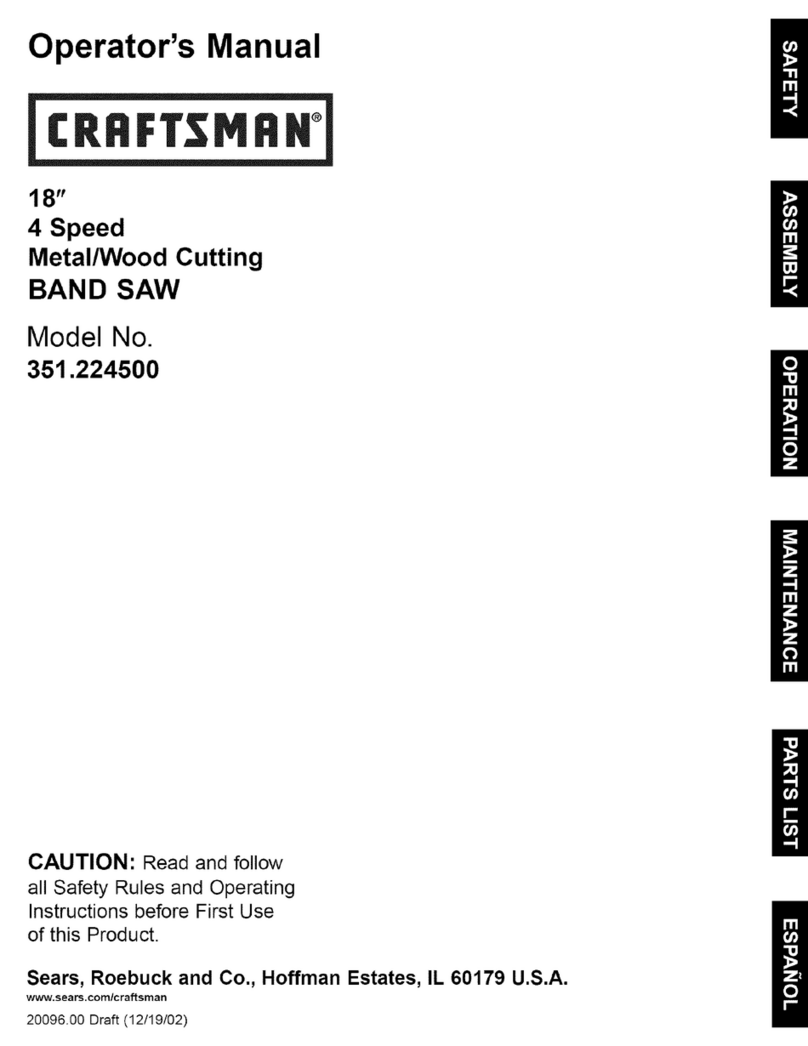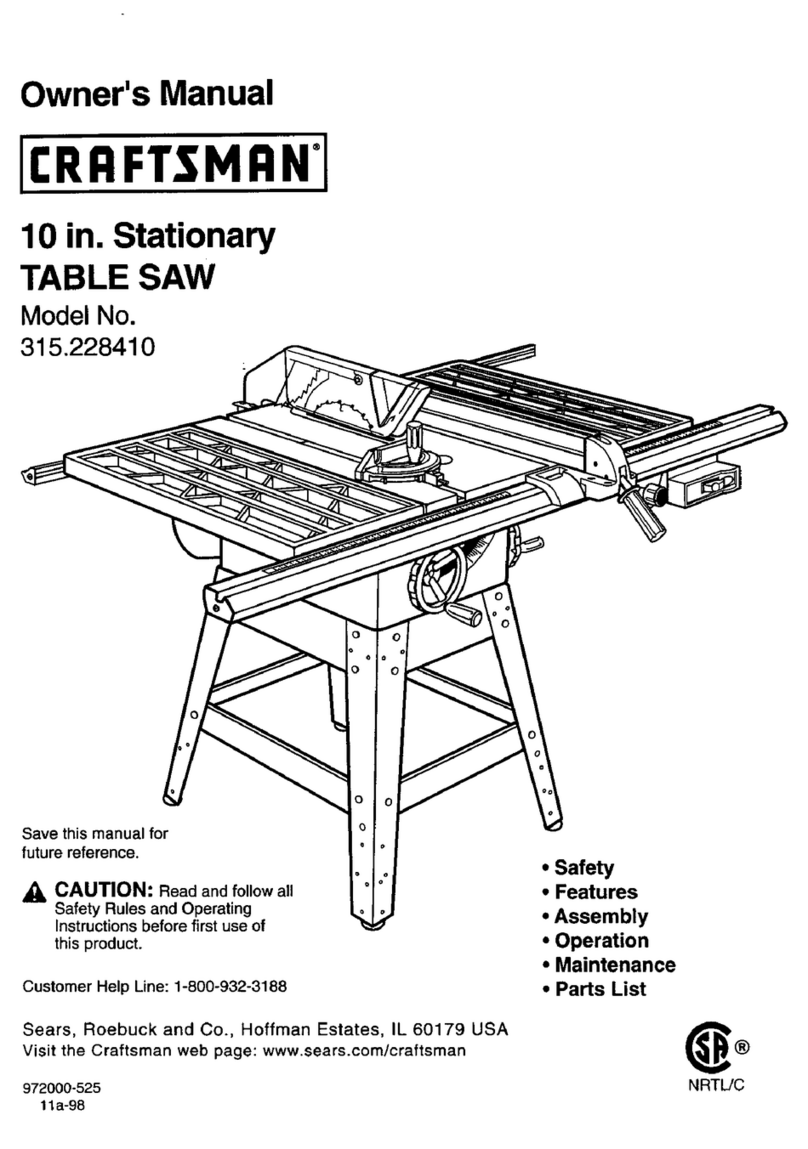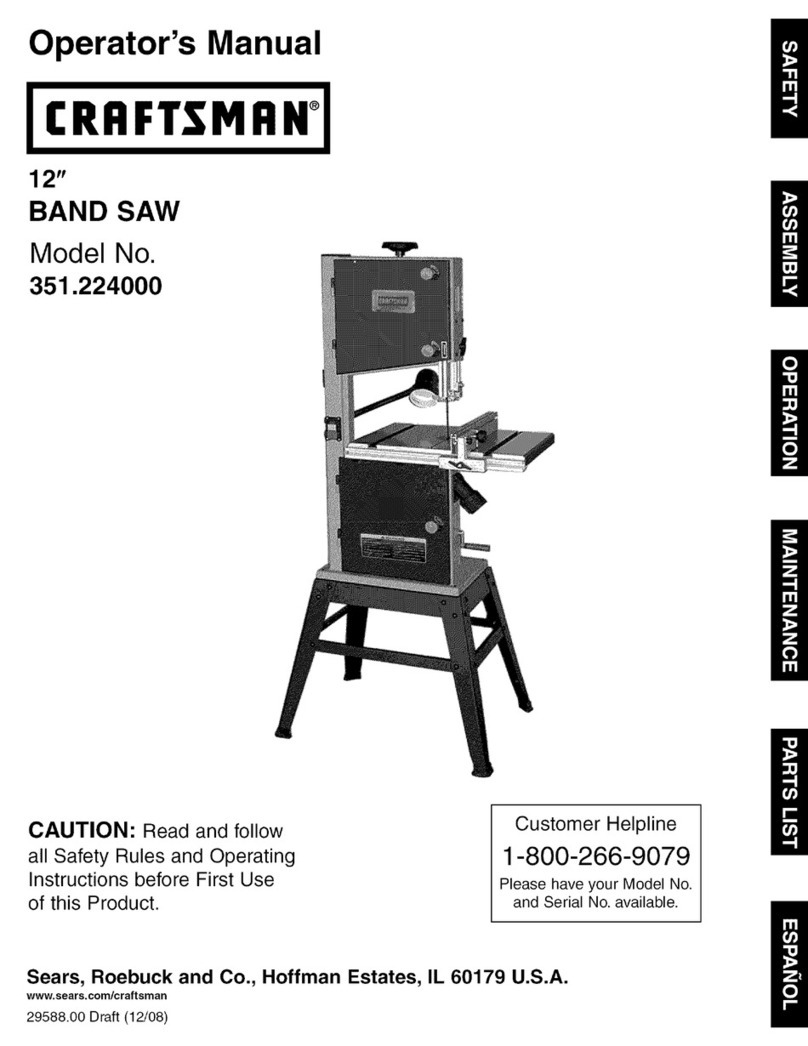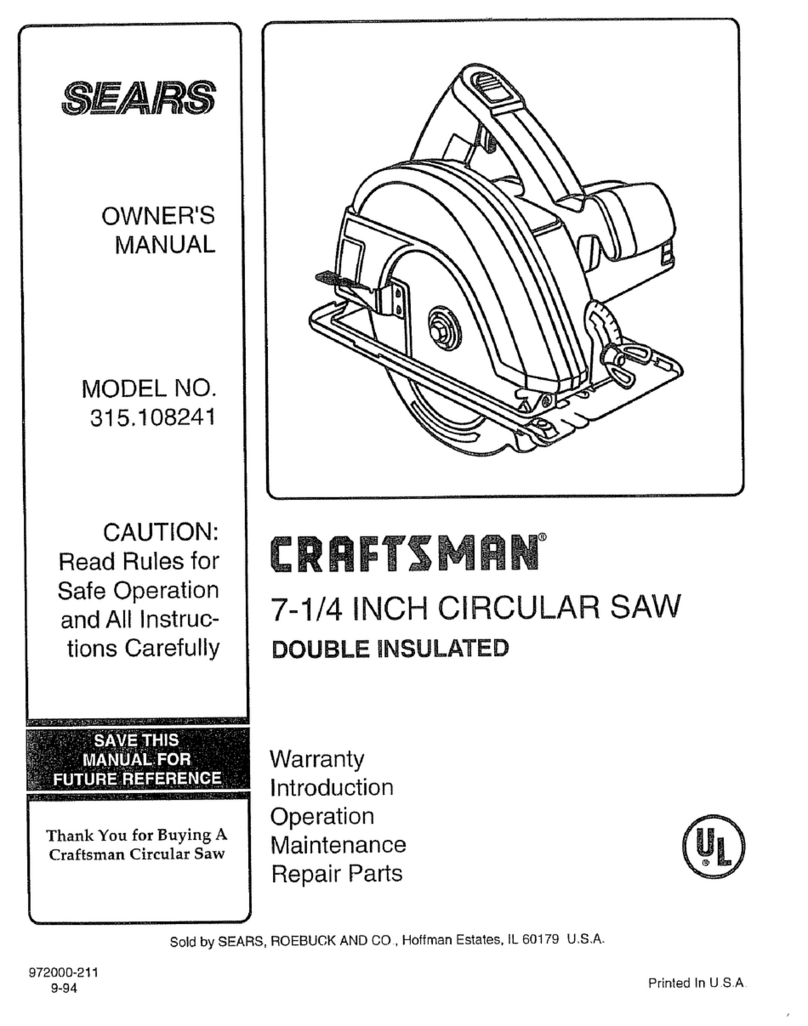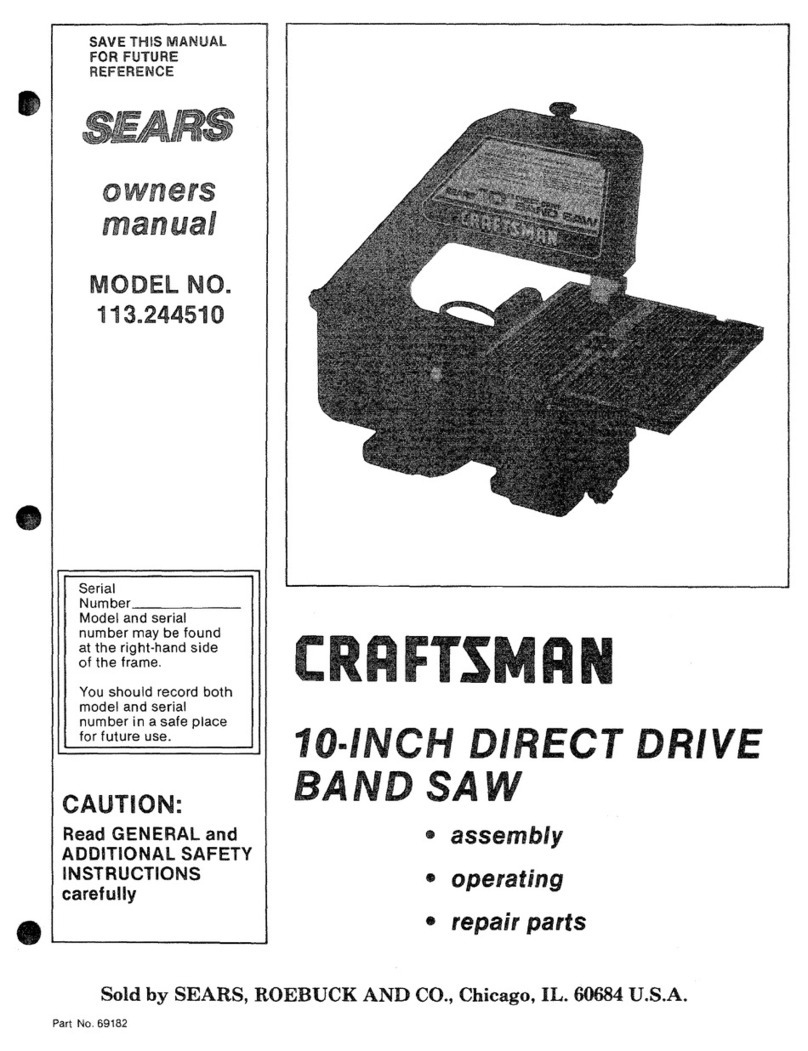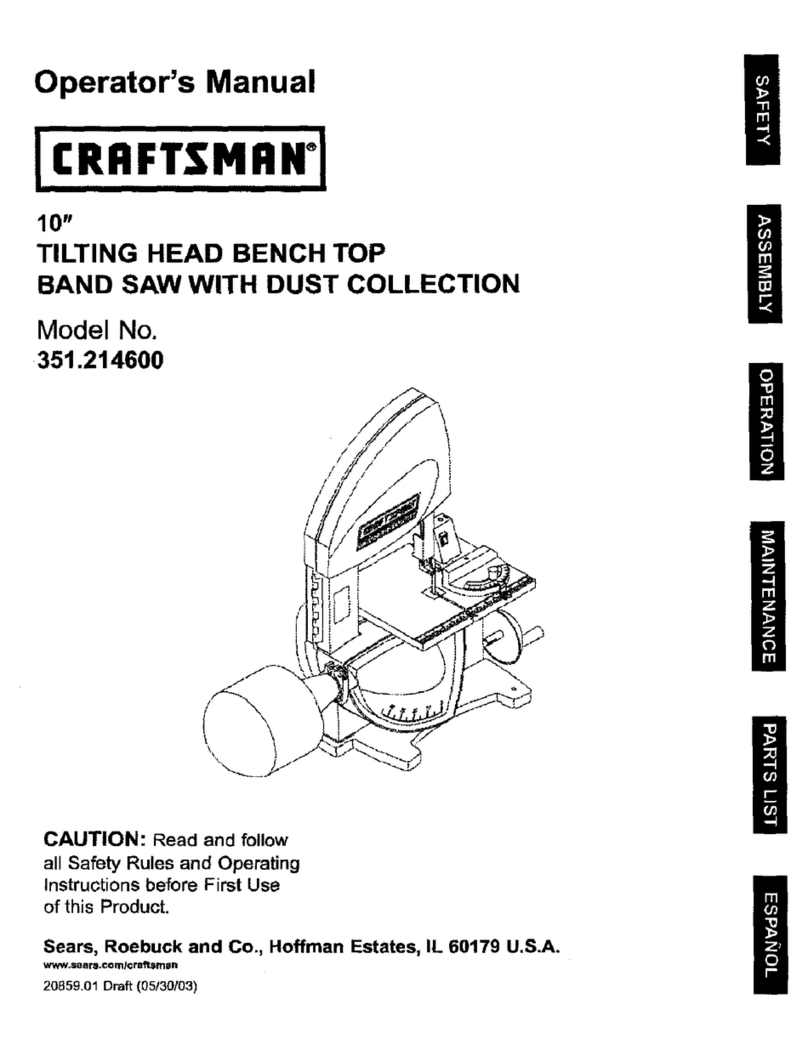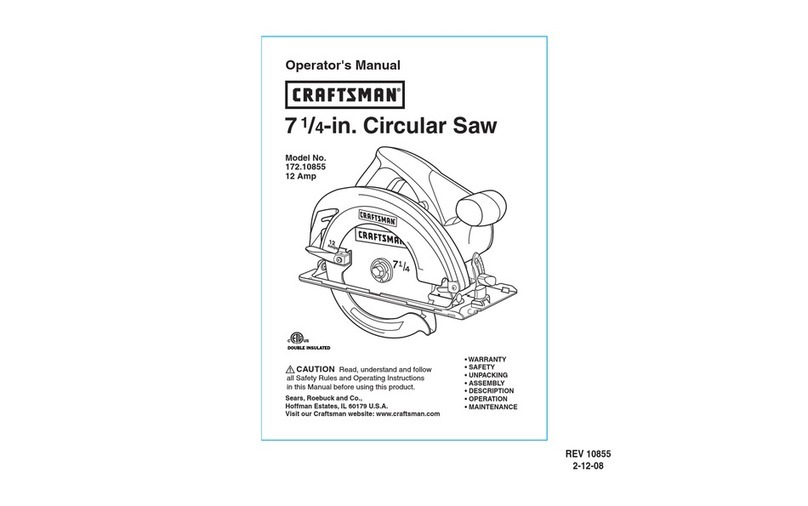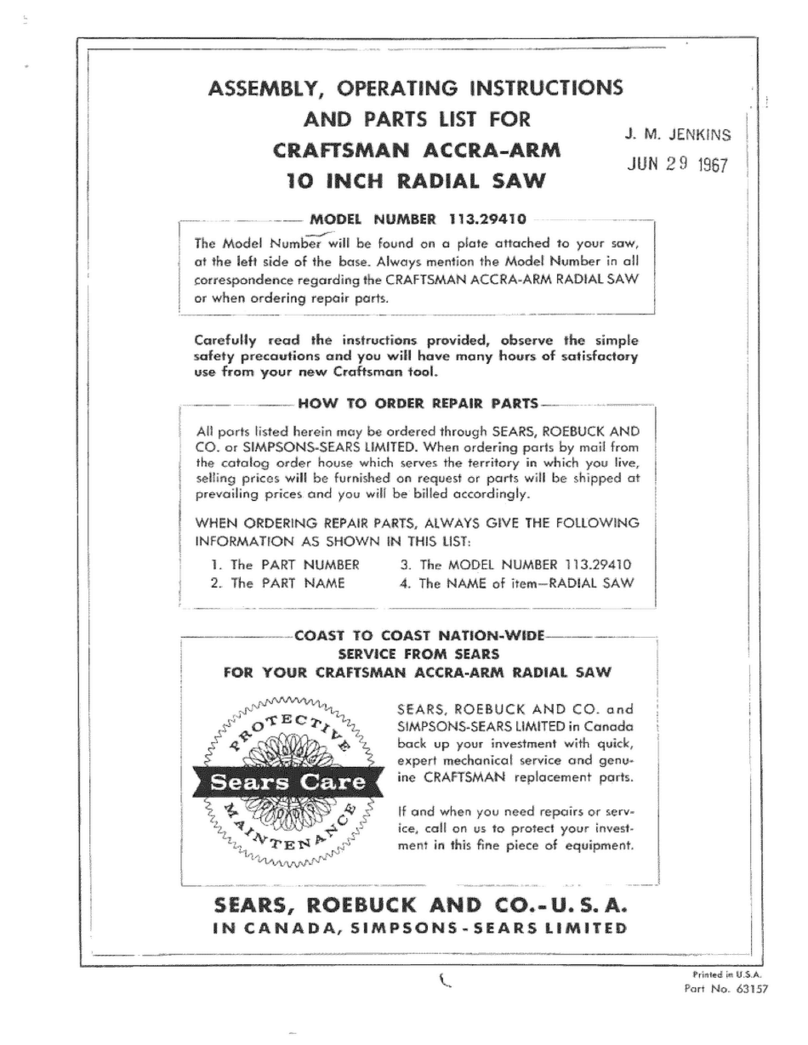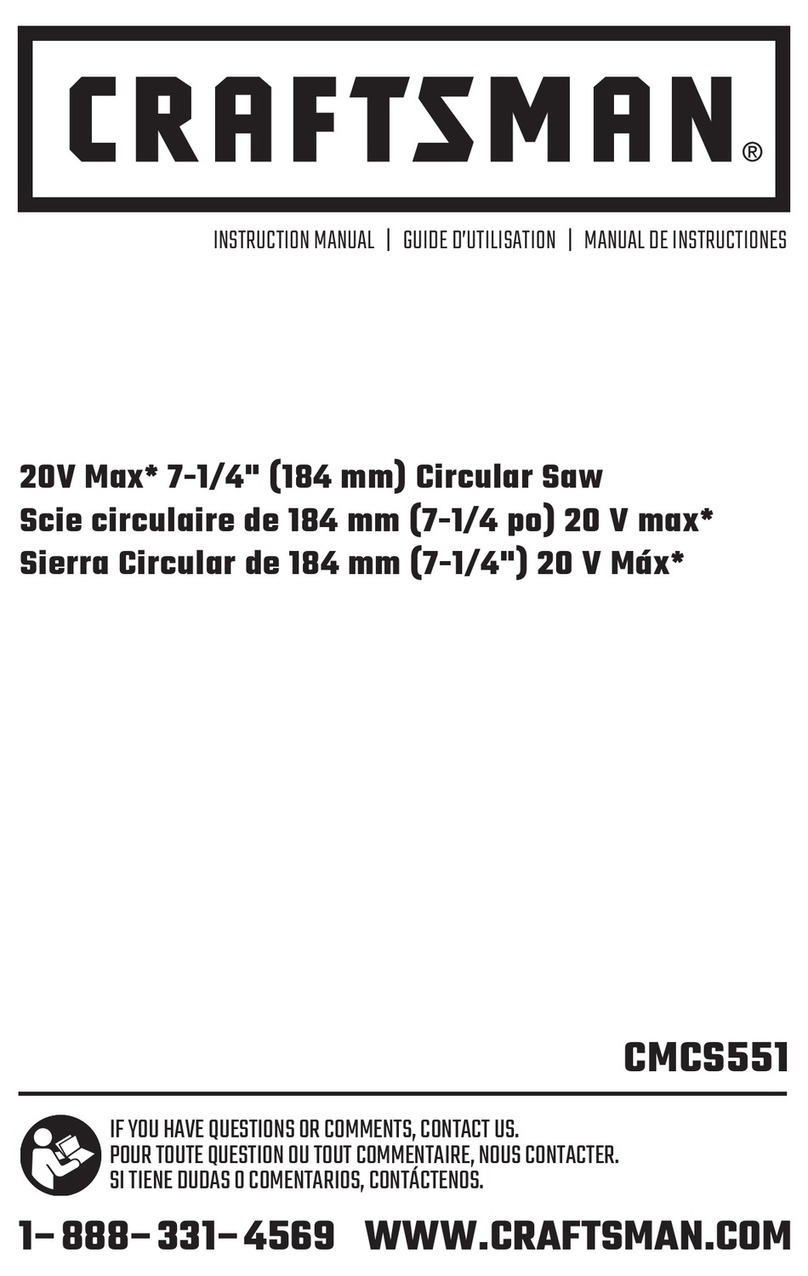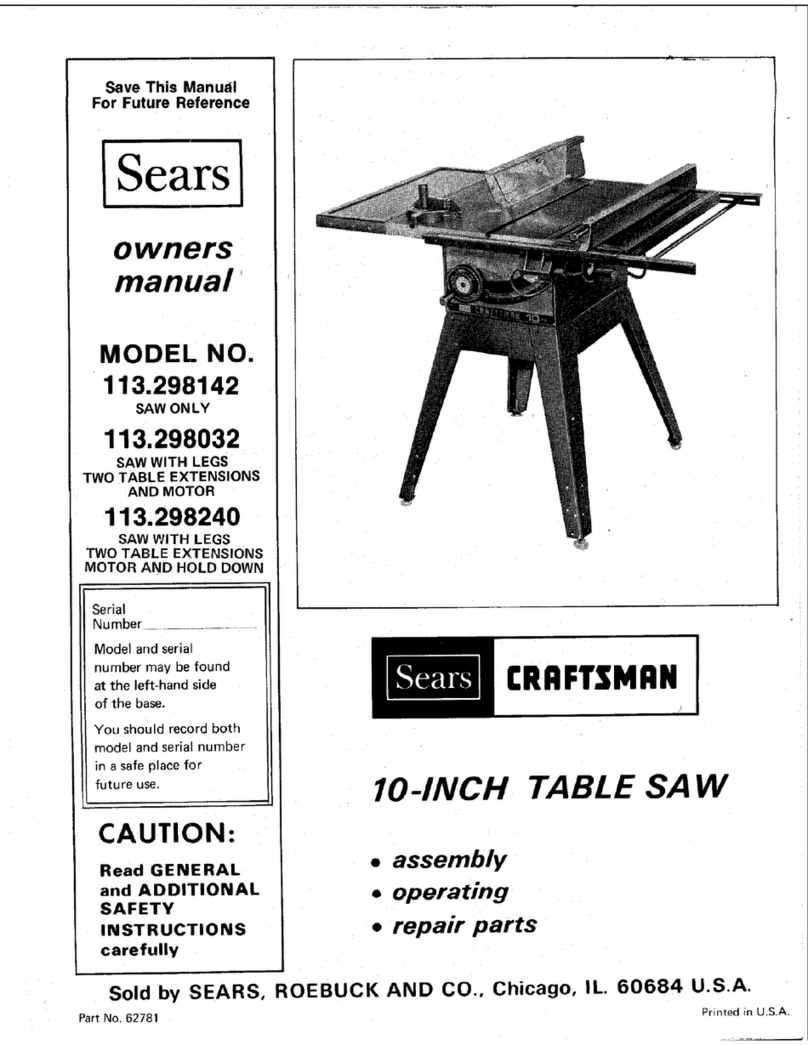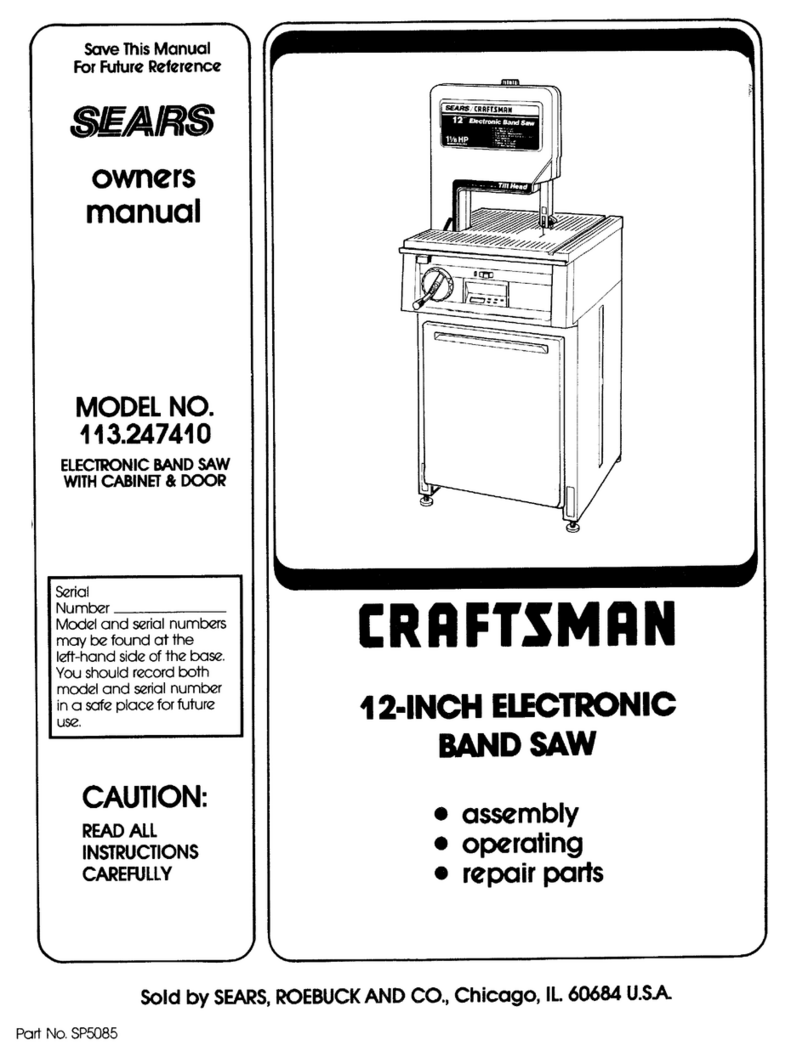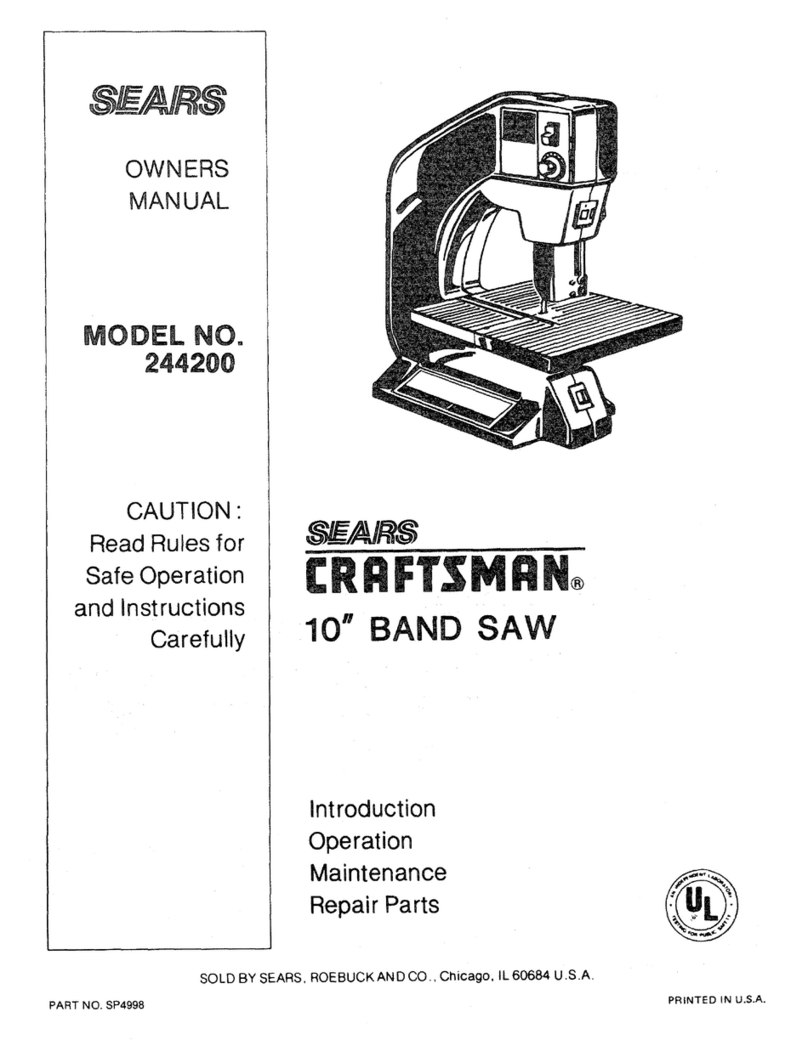To avoid injury from jams, slips, thrown pieces or
broken blades.
Inspect your blade.
• Choose the right blade size, style and cutting speed for
the material and the type of cutting you plan to do,
• Use only recommended accessories. Consult this
owners manual for recommended accessories. Follow
the instructions that come with the accessories. The
use of improper accessories may cause risk of injury to
persons.
•Make surethe bladeteeth pointdownward,toward the table.
•Make sure the blade guides and thrust bearings are
properly adjusted.
• Make sure the blade tension is properly adjusted.
• Make sure the bevel clamp is tight and no parts have
excessive play.
• To avoid accidental blade contact, minimize blade
breakage and provide maximum blade support, always
adjust the upper blade guide and blade guard to just
clear the workpiece.
Inspect your work area.
•Keep work area clean.
•Cluttered areas and benches invite accidents. Floor
must not be slippery from wax or sawdust.
• To avoid burns or other fire damage, never use the saw
near flammable liquids, vapors or gases.
Plan Your Work.
• Use the right tool. Don't force tool or attachment to do
a job it was not designed to do.
•Use this band saw to cut only wood, wood like prod-
ucts and plastics.
CAUTION: To avoid blade breakage, fire or other
damage to the saw, never use this band saw to cut
metals,
• To avoid injury from accidental contact with moving
parts, don't do layout, assembly, or set up work on the
saw while any parts are moving.
• Avoid accidental starting. Make sure switch is "OFF"
before plugging saw into apower outlet.
• Plan ahead to protect your eyes, hands, face and ears.
Dress for safety
• Any power saw can throw foreign objects into the eyes.
This can cause permanent eye damage. Wear safety
goggles (not glasses) that comply with ANSI Z87.1
(shown on package). Everyday eyeglasses have only
impact resistance lenses. They are not safety glasses.
Safety goggles are available at Sears retail stores.
Glasses or goggles not in compliance with ANSI Z87.1
could seriously hurt you when they break.
WEAR YOUR
;Do not wear loose clothing, gloves, neckties or jewelry
(rings, wrist watches). They can get caught and draw
you into moving parts.
• Wear nonslip footwear.
• Tie back long hair.
• Roll long sleeves above the elbow.
•Noise levels vary widely. To avoid possible hearing
damage, wear ear plugs or muffs when using saw for
hours at a time.
•For dusty operations, wear a dust mask along with the
safety goggles.
Inspect your workpiece.
Make sure there are no nails or foreign objects in the
part of the workpiece to be cut.
Use extra caution with large, very small or awkward
workpieces:
•Use extra supports (tables, saw horses, blocks, etc.)
for any workpieces large enough to tip when not held
down to the table top.
• Never use another person as a substitute for a table
extension, or as additional support for a workpiece that
is longer or wider than the basic saw table, or to help
feed, support or pull the workpiece.
•When cutting irregularly shaped workpieces, plan your
work so it will not slip and pinch the blade. A piece of
molding for example, must lie flat or be held by a fixture
or jig that will not let it twist, rock or slip while being cut.
•Properly support round material such as dowel rods, or
tubing. They tend to roll during a cut, causing the blade
to "bite". To avoid this, always use a "V" block or clamp
the work to the miter gage.
• Cut only one workpiece at a time.
• Clear everything except the workpiece and related
support devices off the table before turning the saw on.
Plan the Way You Will Hold the Workpiece
From Start To Finish.
•Do not hand hold pieces so small that your fingers will
go under the blade guard. Use jigs or fixtures to hold
the work and keep your hands away from the blade.
• Secure work. Use clamps to hold work when practical.
It's often safer than using your hand, and frees both
hands to operate the tool.
• Don't overreach. Keep good footing and balance.
